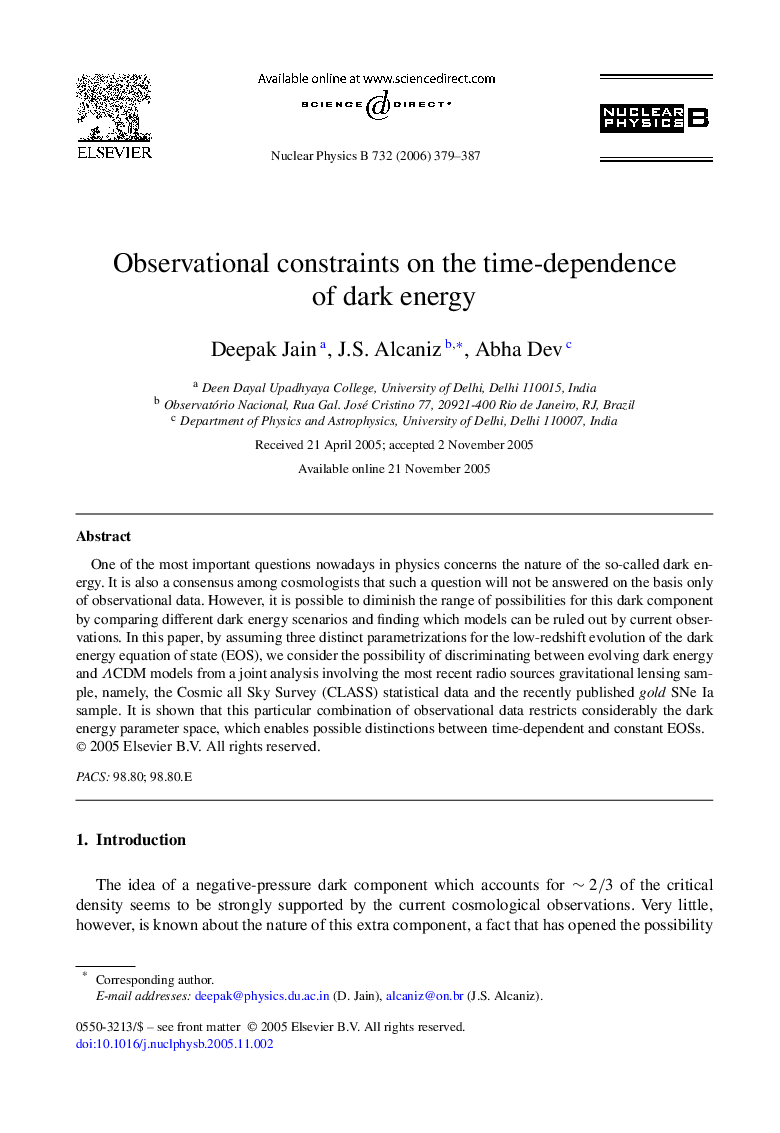| Article ID | Journal | Published Year | Pages | File Type |
|---|---|---|---|---|
| 1843565 | Nuclear Physics B | 2006 | 9 Pages |
Abstract
One of the most important questions nowadays in physics concerns the nature of the so-called dark energy. It is also a consensus among cosmologists that such a question will not be answered on the basis only of observational data. However, it is possible to diminish the range of possibilities for this dark component by comparing different dark energy scenarios and finding which models can be ruled out by current observations. In this paper, by assuming three distinct parametrizations for the low-redshift evolution of the dark energy equation of state (EOS), we consider the possibility of discriminating between evolving dark energy and ÎCDM models from a joint analysis involving the most recent radio sources gravitational lensing sample, namely, the Cosmic all Sky Survey (CLASS) statistical data and the recently published gold SNe Ia sample. It is shown that this particular combination of observational data restricts considerably the dark energy parameter space, which enables possible distinctions between time-dependent and constant EOSs.
Related Topics
Physical Sciences and Engineering
Mathematics
Mathematical Physics
Authors
Deepak Jain, J.S. Alcaniz, Abha Dev,
